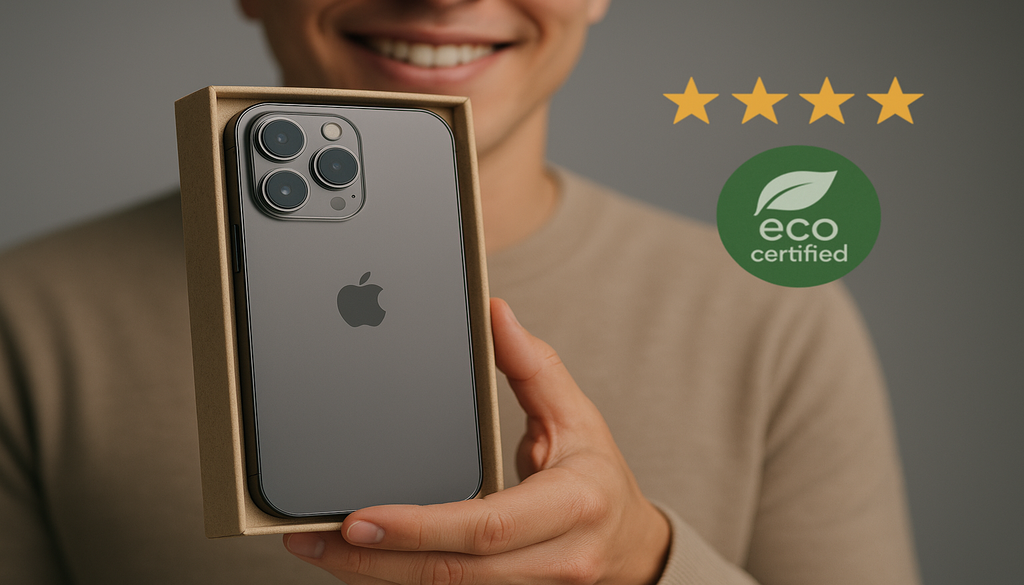
Understanding the Link Between Customer Experience and Brand Loyalty
In today’s highly competitive marketplace, businesses across industries are recognizing that customer experience serves as the cornerstone of sustainable growth and profitability. The relationship between customer experience and brand loyalty is both profound and measurable, with studies consistently showing that customers who enjoy positive interactions with a company are significantly more likely to return for repeat business. This connection is not merely theoretical—research from PwC indicates that 73% of consumers point to customer experience as an important factor in their purchasing decisions, while 42% would pay more for a friendly, welcoming experience. When customers feel valued and understood throughout their journey with your brand, they develop an emotional connection that transcends transactional relationships, fostering a sense of loyalty that competitors find difficult to disrupt. Understanding this link enables businesses to strategically invest in customer-centric initiatives that yield substantial returns through increased retention rates, higher lifetime customer value, and powerful word-of-mouth marketing from satisfied clients.
The modern customer’s expectations have evolved dramatically in recent years, with experiences across all touchpoints—physical, digital, and omnichannel—collectively shaping their perception of your brand. Each interaction, from initial awareness through post-purchase support, contributes to the customer’s overall experience and influences their likelihood of developing loyalty. Notably, research from Bain & Company reveals that increasing customer retention rates by just 5% can increase profits by 25% to 95%, highlighting the economic impact of cultivating customer satisfaction. The relationship between experience and loyalty operates as a virtuous cycle—positive experiences generate satisfaction, which encourages repeat purchases, gradually building loyalty that manifests as advocacy for your brand. This cycle represents the ideal progression for businesses seeking sustainable growth, as loyal customers typically spend 67% more than new ones and are substantially more likely to try new products or services from brands they trust.
For professionals across departments, from marketing to operations to customer service, recognizing this vital connection provides a powerful framework for decision-making and resource allocation. When every team member understands how their role contributes to the customer experience ecosystem, they become empowered to make choices that enhance satisfaction and nurture loyalty. This organizational alignment around customer-centricity creates consistency across touchpoints—a key factor in building trust and reliability in the eyes of consumers. Companies that excel in customer experience see measurably better financial performance, with leaders in customer experience outperforming laggards by nearly 80% in terms of revenue growth according to Forrester Research. The business case for investing in exceptional customer experiences becomes undeniable when viewed through the lens of its direct impact on brand loyalty and the resulting financial benefits.
Developing a comprehensive understanding of this relationship requires businesses to identify the specific elements of customer experience that most strongly influence loyalty in their particular industry and customer segment. Different factors may carry varying weights—for retail businesses, convenience and personalization might be paramount, while for B2B services, reliability and expertise might drive loyalty more strongly. By mapping the customer journey and identifying critical moments that disproportionately impact loyalty (often called “moments of truth”), companies can strategically focus their improvement efforts where they’ll generate the greatest returns. This targeted approach acknowledges that customer experience is multi-dimensional, encompassing functional elements like product quality and efficiency alongside emotional components such as feeling respected, understood, and appreciated throughout the customer journey.
Key Strategies to Enhance Customer Experience
Developing a customer-centric culture stands as perhaps the most fundamental strategy for enhancing customer experience, requiring commitment from leadership and engagement from employees at all levels. This cultural foundation ensures that customer needs and preferences remain at the forefront of business decisions, product development, and service delivery processes. Organizations that successfully cultivate this mindset typically invest significantly in employee training and empowerment, recognizing that frontline staff who feel valued and supported are far more likely to deliver exceptional service to customers. Zappos exemplifies this approach, with its renowned culture focused entirely on delivering “WOW” through service, where employees are encouraged to take ownership of customer issues and empowered to resolve them without excessive oversight. The company’s dedication to cultural transformation has resulted in extraordinary customer loyalty, with 75% of their purchases coming from returning customers who spend 2.5 times more than first-time buyers.
Personalization has emerged as a critical differentiator in customer experience, with 80% of consumers more likely to purchase from companies offering personalized experiences according to Epsilon research. This strategy involves leveraging customer data ethically and effectively to tailor interactions, recommendations, and communications to individual preferences and needs. Advanced technologies such as AI and machine learning enable increasingly sophisticated personalization at scale, from customized product recommendations to personalized marketing communications that acknowledge customers’ unique relationship with your brand. Companies like Amazon and Netflix have set new standards for personalization, with recommendation engines that not only enhance customer experience but also drive significant revenue growth through increased conversion rates and larger average order values. Implementing personalization requires thoughtful data collection processes, robust analytics capabilities, and a commitment to using customer insights to create meaningful, relevant experiences rather than merely pushing products.
Omnichannel consistency represents another vital strategy, ensuring customers enjoy seamless interactions regardless of how they engage with your brand. Today’s consumers frequently switch between digital and physical channels during their journey, expecting consistent information, capabilities, and service quality across all touchpoints. Achieving this consistency requires integrated systems that share customer data across platforms, standardized training for staff across all channels, and unified brand messaging that maintains coherence while adapting to channel-specific requirements. Companies that excel in omnichannel strategies report 91% greater year-over-year customer retention rates compared to those that don’t, according to Aberdeen Group research. Sephora provides an excellent example of omnichannel excellence, with its Beauty Insider program connecting in-store experiences, mobile app functionality, and online shopping through a unified system that recognizes customers and their preferences across all touchpoints.
Proactive service delivery transforms customer experience by addressing needs before they become problems, creating moments of delight that significantly impact loyalty. This approach shifts the service paradigm from reactive problem-solving to anticipatory assistance, identifying potential issues through data analysis and reaching out with solutions before customers even recognize the need. For instance, when Amazon proactively issues refunds for delayed deliveries before customers complain, or when software companies alert users to potential problems and provide solutions before systems fail, they demonstrate commitment to customer success rather than mere satisfaction. Implementing proactive service requires robust monitoring systems, predictive analytics capabilities, and empowered service teams with the autonomy to take initiative. The impact on customer experience is profound—research from Gartner indicates that proactive service can increase net promoter scores by as much as 25 points while simultaneously reducing service costs by eliminating the need for multiple interactions to resolve issues.
The Role of Quality Products in Customer Experience
Quality products form the essential foundation of positive customer experiences, serving as the tangible evidence of a company’s commitment to excellence and customer satisfaction. When customers invest in products that consistently perform as promised, meet their needs effectively, and demonstrate durability over time, they develop confidence in the brand that translates directly into loyalty. This relationship between product quality and customer experience operates at multiple levels—functional reliability addresses basic expectations, while thoughtful design and premium materials can elevate the experience to create emotional connections with the brand. According to a study by American Express, 60% of customers are willing to pay more for better quality products that deliver superior experiences, highlighting the economic value of quality investment. Companies like Apple have built extraordinary brand loyalty by maintaining rigorous quality standards across their product ecosystem, recognizing that each interaction with their products reinforces brand perception and influences future purchasing decisions.
The connection between product quality and customer satisfaction extends far beyond the initial purchase moment, influencing the entire ownership journey and significantly impacting loyalty metrics. High-quality products typically require less customer service intervention, reducing frustration points and support costs while simultaneously increasing satisfaction through reliable performance. Research from the Harvard Business Review indicates that reducing customer effort—the work customers must do to get their problems solved—stands as a stronger predictor of loyalty than delight or satisfaction alone. When products function seamlessly without requiring troubleshooting or replacement, customers avoid the negative experiences that frequently drive defection to competitors. This reliability creates a foundation of trust that makes customers more forgiving when inevitable service issues arise in other aspects of their brand experience, providing companies with valuable goodwill that helps maintain relationships through occasional challenges.
Product quality directly influences word-of-mouth marketing, with satisfied customers frequently becoming powerful brand advocates who drive new customer acquisition through authentic recommendations. In today’s digital landscape, these recommendations extend far beyond personal conversations to online reviews, social media endorsements, and community forums where product experiences are shared with potentially thousands of prospective customers. The data clearly demonstrates this impact—92% of consumers trust recommendations from friends and family more than any form of advertising according to Nielsen research, while products with positive online reviews see conversion rates increase by up to 270% compared to those without. Companies like Patagonia have leveraged exceptional product quality to build communities of passionate customers who enthusiastically promote their brand values and products, creating a sustainable growth engine powered by authentic advocacy rather than paid advertising.
The definition of product quality has expanded in recent years to encompass not just functional performance but also environmental sustainability, ethical production methods, and alignment with customer values—all factors that increasingly influence satisfaction and loyalty among today’s conscious consumers. Modern customers, particularly Millennials and Generation Z, evaluate quality through a broader lens that includes the product’s impact on communities and the environment throughout its lifecycle. According to research from Nielson, 73% of global consumers say they would definitely change their consumption habits to reduce environmental impact, making sustainable quality a critical factor in maintaining relevance with emerging customer segments. Brands like Seventh Generation and Method have built loyal customer bases by delivering products that perform effectively while honoring commitments to environmental responsibility, demonstrating that quality now encompasses both performance and purpose in the customer’s evaluation process.
Delivering Exceptional Service: Beyond the Basics
Exceptional service transcends the fundamental expectations of accuracy, efficiency, and politeness to create memorable experiences that forge emotional connections with customers. This elevated approach to service recognizes that while meeting basic needs prevents dissatisfaction, truly building loyalty requires going beyond transactional adequacy to demonstrate genuine care for customer success. Research from Temkin Group reveals that customers who have excellent service experiences are 3.5 times more likely to repurchase and 5 times more likely to recommend the company to others compared to those who merely receive adequate service. Companies like Nordstrom have built legendary reputations by institutionalizing exceptional service through policies like their no-questions-asked return policy and empowering employees to make independent decisions in the customer’s best interest. When service representatives are trained not just in procedures but in emotional intelligence and problem-solving, they transform routine interactions into opportunities to strengthen the customer relationship and differentiate the brand in meaningful ways that competitors struggle to replicate.
Personalization plays a crucial role in exceptional service delivery, with customers increasingly expecting companies to recognize their individual history, preferences, and needs across interactions. This personalized approach begins with effective data utilization—consolidating customer information from multiple touchpoints to create comprehensive profiles that inform service interactions. However, truly exceptional personalization goes beyond algorithmic recommendations to incorporate human empathy and contextual understanding that makes customers feel genuinely understood rather than merely tracked. Companies like Ritz-Carlton exemplify this approach through their famous customer preference system, where staff record guest preferences and special requests in a shared database accessible to all properties, ensuring returning guests feel recognized and valued wherever they stay. Research supports the impact of this strategy, with Accenture finding that 91% of consumers are more likely to shop with brands that recognize them, remember them, and provide relevant offers and recommendations.
Proactive problem resolution represents another dimension of exceptional service that significantly enhances customer experience and builds loyalty. Rather than waiting for customers to discover and report issues, forward-thinking companies leverage technology and data analytics to identify potential problems before they impact the customer experience. This anticipatory approach demonstrates respect for customers’ time and signals the company’s commitment to their success beyond the initial transaction. For example, when Netflix experiences service disruptions, they often proactively issue credits to affected customers before complaints are received, turning a potentially negative experience into a demonstration of accountability and customer focus. According to research from Gartner, proactive customer service approaches can reduce call center volume by up to 30% while increasing customer satisfaction scores by as much as 20%, creating both operational efficiency and loyalty benefits. Companies implementing proactive service strategies recognize that preventing negative experiences often proves more valuable than attempting to recover from them after they occur.
Creating emotional connections through service interactions provides companies with a powerful competitive advantage that transcends functional benefits and price considerations. Research consistently shows that customers who feel emotionally connected to brands are substantially more valuable—according to Harvard Business Review, emotionally connected customers have a 306% higher lifetime value and recommend brands at much higher rates than those who are merely satisfied. Exceptional service creates these connections through authentic interactions that demonstrate genuine interest in customer well-being rather than scripted responses designed to minimize interaction time. Companies like Chewy, the online pet supply retailer, have become renowned for service experiences that create powerful emotional bonds—such as sending sympathy flowers when they learn a customer’s pet has died or refunding orders for deceased pets while encouraging customers to donate the products to animal shelters. These emotionally intelligent service moments transform transactional relationships into loyal connections that withstand competitive pressures and price sensitivity, providing sustainable competitive advantage in increasingly commoditized markets.
Measuring and Analyzing Customer Satisfaction
Implementing comprehensive measurement systems provides the foundation for understanding and improving customer satisfaction, with effective programs typically combining multiple methodologies to capture both quantitative trends and qualitative insights. Transactional surveys deployed immediately after service interactions or purchases offer timely feedback on specific touchpoints, while relationship surveys conducted periodically measure broader sentiment about the overall brand experience. Net Promoter Score (NPS) has emerged as an industry standard metric that correlates strongly with loyalty behaviors, asking the simple question of how likely customers are to recommend the company to others on a scale of 0-10. Complementing these structured metrics, sentiment analysis of customer communications across channels—from social media mentions to contact center interactions—provides contextual understanding of customer perceptions and emerging issues. Companies like USAA demonstrate the power of comprehensive measurement, with their Customer Experience Management Office analyzing over 10 million customer feedback data points annually to identify improvement opportunities and track the impact of experience initiatives on loyalty metrics like retention and cross-purchasing behavior.
Converting measurement data into actionable insights requires sophisticated analysis that moves beyond simple averages to identify patterns, correlations, and causal relationships between experience factors and business outcomes. Advanced analytics approaches include driver analysis to determine which elements of the experience most strongly influence overall satisfaction and loyalty, journey analytics to map how experiences across touchpoints collectively shape customer perceptions, and predictive modeling to identify customers at risk of defection based on satisfaction indicators. These analytical capabilities enable companies to prioritize improvement initiatives based on their expected impact on customer loyalty and business performance rather than intuition or anecdotal evidence. For example, American Express uses predictive analytics to identify potential service issues based on historical patterns, allowing them to intervene with at-risk customers before problems escalate to dissatisfaction. Companies that excel in customer experience analytics typically establish cross-functional teams that combine data scientists with customer experience specialists, ensuring technical rigor and business relevance in their analytical approach.
Effective satisfaction measurement must incorporate structured feedback loops that ensure insights translate into tangible improvements rather than merely documenting problems. These feedback mechanisms connect measurement systems to operational processes, creating accountability for acting on customer insights throughout the organization. Progressive companies establish formal processes for reviewing satisfaction data, identifying improvement opportunities, developing action plans, and tracking the impact of changes on subsequent satisfaction scores. Delta Air Lines exemplifies this approach with its Customer Experience Council, which regularly reviews satisfaction metrics across touchpoints and allocates resources to address the most significant pain points identified through customer feedback. To maximize the impact of these feedback loops, leading companies close the circle by communicating improvements back to customers who provided feedback—acknowledging their input and demonstrating responsiveness to their concerns. According to research from Microsoft, 77% of consumers view brands more favorably when they proactively invite and accept customer feedback, making the measurement process itself an opportunity to enhance satisfaction and loyalty.
Beyond measuring satisfaction with existing experiences, truly customer-centric organizations leverage voice-of-customer insights to drive innovation in products, services, and delivery models. This approach views customer feedback not merely as a scorecard but as a strategic asset that informs business evolution and competitive positioning. Companies like Intuit have pioneered “follow me home” programs where product developers observe customers using their software in real-world settings, generating insights that drive feature development and usability improvements. Similarly, LEGO’s Ideas platform invites customers to submit product concepts and vote on submissions, directly involving customers in the innovation process while generating enthusiasm and loyalty among participants. Research from McKinsey indicates that companies that systematically leverage customer insights in their innovation processes are twice as likely to develop successful new products and services compared to those that don’t. By creating this virtuous cycle where customer feedback drives improvements that enhance satisfaction and generate further positive feedback, companies establish sustainable competitive advantages through customer-inspired innovation.
Case Studies: Successful Brand Loyalty Programs
Amazon Prime represents perhaps the most transformative loyalty program in modern retail history, fundamentally redefining customer expectations around convenience and value while creating extraordinary retention rates that competitors struggle to match. Unlike traditional points-based programs, Prime adopted a subscription model that transformed occasional Amazon shoppers into committed brand advocates through a constantly expanding suite of benefits anchored by free two-day shipping. The program’s genius lies in its ability to drive behavioral change—Prime members spend an average of $1,400 annually compared to $600 for non-members, according to Consumer Intelligence Research Partners. By bundling diverse benefits like streaming entertainment, photo storage, and exclusive discounts, Amazon created a multidimensional loyalty ecosystem that addresses multiple customer needs while raising switching costs for members considering competitor offerings. The program’s success metrics are staggering, with renewal rates exceeding 90% and membership growing to over 200 million worldwide, generating subscription revenue while simultaneously increasing purchase frequency and basket size. Amazon’s willingness to continuously invest in expanding Prime benefits demonstrates their understanding that the program’s value extends far beyond immediate transactional metrics to create sustainable competitive advantage through customer loyalty.
Sephora’s Beauty Insider program exemplifies excellence in tiered loyalty design that effectively balances accessibility with exclusivity while creating aspirational pathways that encourage increased customer spending. Unlike many retail loyalty programs that focus primarily on discounts, Beauty Insider strategically combines transactional rewards (points redeemable for products) with experiential benefits like exclusive events, early access to products, and personalized beauty consultations that create emotional connections transcending monetary value. The program’s sophisticated tiered structure—Insider, VIB, and Rouge levels—creates clear progression paths that incentivize customers to consolidate their beauty spending at Sephora to reach higher status levels with enhanced benefits. This approach has proven remarkably effective, with program members accounting for approximately 80% of Sephora’s sales according to industry analysts. The program also excels in omnichannel integration, with consistent recognition and benefits across in-store, online, and mobile app experiences, creating a seamless ecosystem that enhances convenience while collecting valuable customer data that powers personalized recommendations and communications. Sephora’s continued innovation within the program, including the introduction of community features that connect like-minded beauty enthusiasts, demonstrates their understanding that effective loyalty programs must evolve to maintain relevance and competitive differentiation.
Starbucks Rewards revolutionized mobile loyalty in the food and beverage industry by combining frictionless payment functionality with gamified rewards mechanisms that drive increased visit frequency and spend per transaction. By integrating their loyalty program directly into their mobile app, Starbucks created unprecedented convenience while gathering valuable data about customer preferences and purchase patterns. The program’s most innovative feature—Mobile Order & Pay—allows members to order and pay ahead, skipping lines while earning rewards, effectively addressing a key pain point (waiting time) while simultaneously reinforcing loyalty behaviors. This integration of convenience, rewards, and personalization has generated remarkable results, with the program driving approximately 40% of all U.S. sales according to company reports, while the mobile app accounts for over 20% of all transactions. The program’s success stems from its careful balance of immediate gratification (stars earned with each purchase) and longer-term goals (status levels and significant rewards), creating multiple motivation mechanisms that appeal to different customer segments. Starbucks continuously refines the program based on behavioral data and customer feedback, demonstrating the importance of treating loyalty programs as dynamic strategic assets rather than static marketing initiatives.
Southwest Airlines’ Rapid Rewards program illustrates how effectively aligning loyalty mechanics with brand positioning can create powerful differentiation in highly competitive industries where customer switching costs are traditionally low. Unlike competitor programs that emphasize elite status and exclusive perks for top-tier travelers, Southwest designed Rapid Rewards to reflect their democratic, no-frills brand ethos with straightforward earn-and-burn mechanics and the industry-distinguishing feature of points that never expire. The program’s simplicity—points based on fare amount rather than distance flown, no blackout dates, and transparent redemption values—resonates with the airline’s brand position of straightforward value and customer-friendly policies. The program drives remarkable loyalty, with Southwest maintaining the industry’s highest customer satisfaction ratings according to J.D. Power while achieving a profit streak unmatched by competitors. The program’s most innovative element—the Companion Pass allowing a designated person to fly free with the member after earning 125,000 qualifying points—creates an aspirational benefit that drives incremental travel while generating powerful word-of-mouth as members showcase the benefit to friends and family. Southwest’s success demonstrates that loyalty programs are most effective when they authentically extend and reinforce the brand’s core value proposition rather than merely mimicking competitor offerings.
Conclusion
Building exceptional customer experiences represents not merely a competitive advantage but an essential strategic imperative for businesses seeking sustainable growth in today’s experience-driven marketplace. Throughout this exploration, we’ve seen how quality products form the foundation of customer satisfaction, while exceptional service creates the emotional connections that transform satisfied customers into loyal advocates. The organizations that excel in fostering brand loyalty recognize that every touchpoint—from product design to service delivery to post-purchase support—contributes to an interconnected experience ecosystem that collectively shapes customer perceptions and behaviors. Successful loyalty initiatives like those implemented by Amazon, Sephora, Starbucks, and Southwest Airlines demonstrate that effective programs align with brand values while delivering meaningful benefits that resonate with specific customer segments.
As competitive landscapes continue evolving and customer expectations rise accordingly, businesses must adopt increasingly sophisticated approaches to measuring satisfaction, analyzing behavioral data, and implementing continuous improvements based on customer insights. The most successful organizations view these activities not as isolated initiatives but as fundamental aspects of a customer-centric operational philosophy that permeates every department and decision. For professionals seeking to enhance customer loyalty in their organizations, the path forward requires balanced investment across product quality, service excellence, and measurement systems that provide actionable insights. By prioritizing these elements while maintaining authentic alignment with brand values and customer expectations, businesses can cultivate the kind of loyalty that translates directly into sustainable growth, profitability, and competitive resilience in rapidly changing markets.
Frequently Asked Questions (FAQ)
Q1: How can businesses effectively measure customer satisfaction?
To effectively measure customer satisfaction, businesses should utilize a combination of quantitative and qualitative methods. Surveys, customer feedback forms, and Net Promoter Scores (NPS) provide valuable data points that can be tracked over time to identify trends and improvement opportunities. Additionally, analyzing customer interactions through service touchpoints and social media can offer deeper insights into their experiences and expectations. Modern approaches also incorporate sentiment analysis of customer communications and predictive analytics to identify at-risk customers before they defect. For maximum effectiveness, measurement systems should connect directly to operational processes through structured feedback loops that ensure insights translate into tangible improvements. Regular benchmarking against industry standards and competitors provides context for internal metrics, while customer journey analytics helps identify which touchpoints most significantly impact overall satisfaction and loyalty behaviors.
Q2: What are some common mistakes companies make in customer service that affect brand loyalty?
Common mistakes include not listening to customer feedback, slow response times, and inconsistent service quality across channels or locations. Neglecting personalized interactions or failing to resolve complaints effectively can also severely damage loyalty. Many companies make the critical error of focusing on efficiency metrics like average handle time rather than resolution effectiveness, incentivizing quick but incomplete solutions that necessitate multiple customer contacts. Another frequent mistake is creating unnecessary friction in service processes—complex IVR systems, repetitive information requests, or making customers navigate between departments to resolve related issues. Companies often underinvest in frontline employee training and empowerment, leaving service representatives without the knowledge or authority to effectively address customer needs. Finally, many organizations fail to connect service insights to broader operational improvements, treating symptom management as the goal rather than addressing root causes of customer dissatisfaction. Companies should focus on training customer service teams in both technical skills and emotional intelligence, implementing robust feedback systems, and consistently monitoring service quality across all touchpoints to avoid these pitfalls and enhance overall customer satisfaction.





